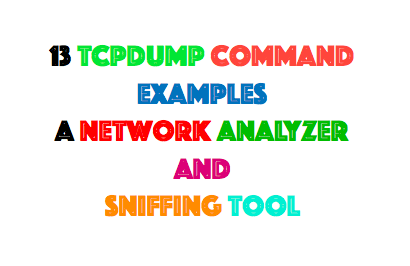

The current version is available via HTTPS: The original distribution is available via anonymous ftp.Tcpdump Examples - 22 Tactical Commands HackerTarget It is wise to use quotes around compound expressions so that bash doesn't try to interpret parenthesis tcpdump supports and / or / not operators as keywords, e.g., tcpdump -i eth0 host and (port 80 or port 443).istrators often rely on for troubleshooting.Web servers such as Apache, NGINX, Oracle HTTP, IHS web servers and application servers such as Weblogic, Websphere, Tomcat, Jbos This post is written for the people who work in middleware technologies. istrators and developers when it comes to troubleshooting.Extract HTTP User Agent from HTTP request header.:~$ sudo tcpdump -nn -A -s1500 -l | grep User-Agent: By using egrep and multiple matches we can get the User Agent and the Host (or any other header) from the request.:~$ sudo tcpdump -nn -A -s1500 -l | egrep -i 'User-Agent:|Host:' 2.Schneidet sowohl HTTP-, als auch HTTPS-Pakete mit: sudo tcpdump -i wlan0 -q '(tcp port 80) or (tcp port 443)' Macht das Gleiche wie das Beispiel zuvor, nur werden die Pakete nicht formatiert auf dem Bildschirm ausgegeben, sondern raw in die Datei output.dump geschrieben.Once you have mastered these options, please go to the man page of tcpdump to view more about the command.Home Tcpdump HTTPS tcpdump › Wiki › ubuntuusers The "tcpdump" contains a variety of commands you can use to analyze the packets thoroughly. For example, the following command will capture the packets upto 100 bytes. The default packet length is 65535 bytes. The "-s" option enables you to set the size of each packet to be captured. All you have to do is use the "-r" option with tcpdump command and specify the path of the file you want to read. The "-r" option lets you read the output of a file. The "-w" option lets you write the output of tcpdump to a file which you can save for further analysis. For example, the following command will capture the packets of "eth0" interface. Use the "ifconfig" command to list all the interfaces. There may be multiple network interfaces in a system. The "-i" option lets you specify the network interface you want the packets to be captured from. For example, the following command will capture 20 packets and suspend automatically. We can enter the number of packets we want to capture infront of the "-c" option. The "-c" option is used to limit the number of packets to be captured. You can also use "v" multiple times for an even verbose output. when you use the "-v" option, the output is displayed in a verbose manner. Without this option, the output displays hostname which is converted to it's corresponding IP address. The "-n" option is used to translate the hostname and ports.

Here are some of the commonly used options. If you run the Tcpdump command without any options, the tcpdump will start displaying packets indefinitely until you suspend the operation. Ubuntu/Debian family - apt-get install tcpdump Please run the following commands to install "tcpdump". You will have to install tcpdump before start using it. You can also write the contents of tcpdump to a file.
YUM INSTALL TCPDUMP FREE
Tcpdump is a free tool licensed under BSD license. It displays the packets(TCP/IP) transmitted or received by a network. It runs under the command line and is a very useful network tool. Tcpdump is a tool used to analyze packets incident on a server.


 0 kommentar(er)
0 kommentar(er)
